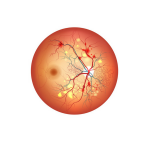Sleep Balance Profile from ZRT Laboratory
Unique four-point test announced by ZRT Laboratory offers a true diurnal pattern of melatonin and cortisol that eliminates the need for error-promoting overnight sampling
Portland, Oregon – ZRT Laboratory announces the availability of a Sleep Balance Profile that offers the precision of four-point reporting and eliminates the error-promoting nature of overnight sampling, resulting in a true 24-hour cortisol and melatonin pattern for patients suffering from sleep disturbances.
By testing samples in dried urine, as opposed to the more common methods of testing blood or saliva, ZRT Laboratory eliminates the need for collecting an overnight sample, which interrupts sleep and skews results.
“Melatonin production peaks around 2 a.m., so that is the optimal time point to measure it,” says Dr. David Zava, Ph.D., CEO and Chief Scientist of ZRT Laboratory. “The problem is that knowing you have to wake up at 2 a.m. to collect a sample is going to unnaturally raise your cortisol level, and melatonin results can also be flawed by the light you are exposed to during collection. We provide the best accuracy because there’s no sleep interruption.”
Melatonin and cortisol levels are measured by testing urine samples, which patients collect and dry on filter strips at four convenient time points during the day. Tests are conducted by liquid chromatography tandem mass spectrometry (LC-MS/MS), the most sophisticated method of analysis available.
The first urine sample, collected immediately upon waking, represents the average of the dark period or overnight peak of melatonin production. The second urine sample, collected about two hours later, reflects the cortisol awakening response – when melatonin should be falling and cortisol peaking. Urine is also collected in the evening when melatonin and cortisol should both be at their low points, and then again just before bed when the melatonin should be rising again and cortisol at its lowest point.
“You’re not going to get a true 24-hour picture of melatonin and cortisol levels without testing multiple samples at representative times during the day,” says Zava. “Taking only a single sample, or averaging the samples together, won’t be nearly as accurate.”
In addition to accuracy, the ZRT Laboratory Sleep Balance Profile offers greater convenience. Collecting samples on the filter strips eliminates the hassle of carrying a liquid collection jug for 24 hours. Hormones in dried urine samples are also stable for months, so there is no need for special handling or refrigeration – making it easy and inexpensive to ship samples back to the lab for processing.
The development of this test coincides with the growing national trend of sleeplessness in America. According to the Better Sleep Council, 65 percent of Americans are losing sleep because of stress and another 16 percent experience stress-induced insomnia. A 2011 report from the US Department of Health and Human Services (DHHS) reveals that over a third of adults report daytime sleepiness so severe it interferes with work, decision making and social functioning. In fact, when people who lack sleep are tested on a driving simulator, they perform as badly or worse than those who are drunk.
About ZRT Laboratory
Headquartered in Portland, Oregon, ZRT LABORATORY is the recognized innovator of saliva, dried blood spot and dried urine testing methodologies. Unlike traditional labs that provide only a test number, ZRT specializes in individualized evaluations with meaning. Easy-to-read color graphic reports go beyond the numbers and correlate symptoms with lab test levels and current medical treatments to help physicians target areas for treatment or further evaluation. History reports with up to four of the most recent tests, also help physicians quickly evaluate, contrast and compare changes in hormone levels and symptoms associated with treatment.



